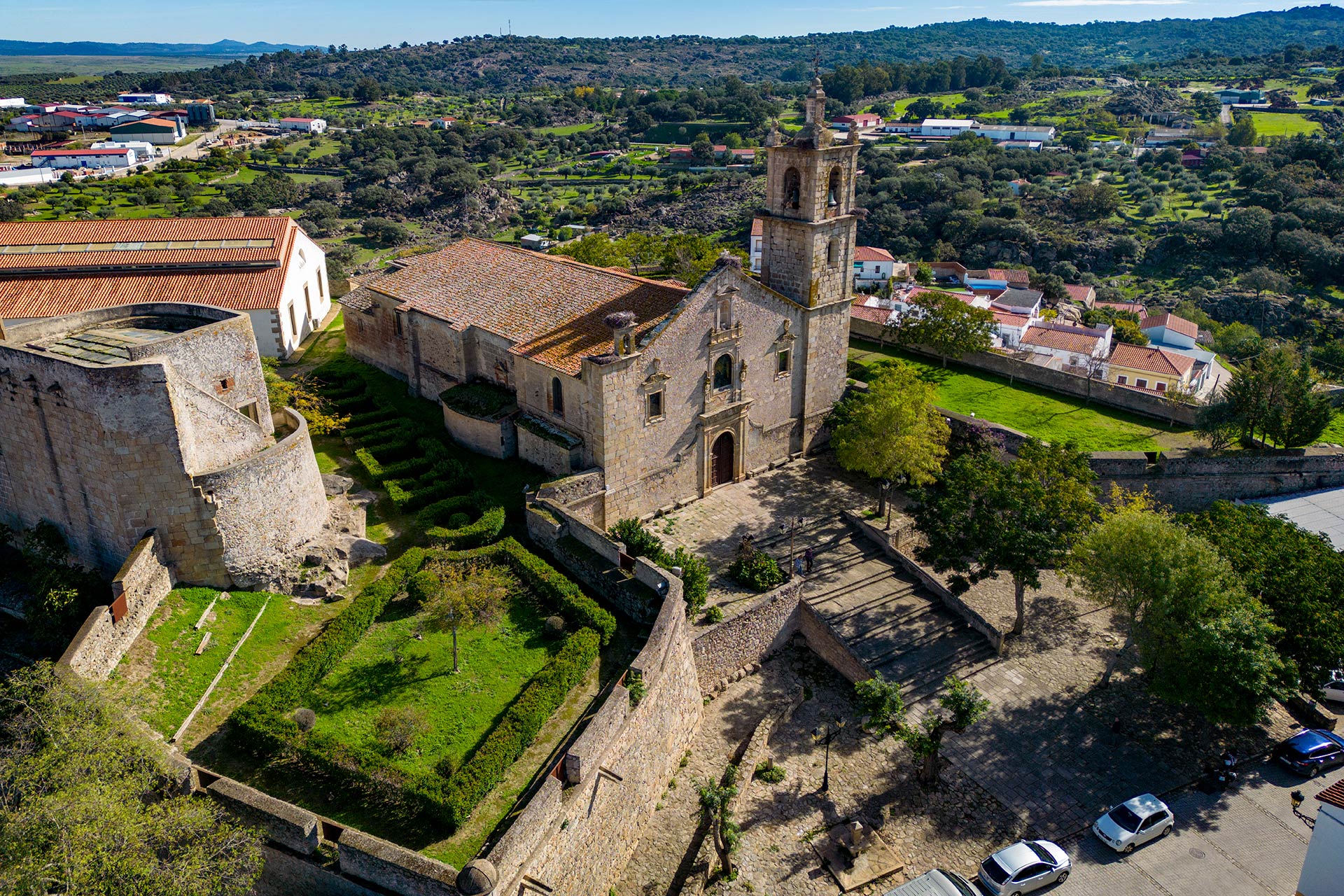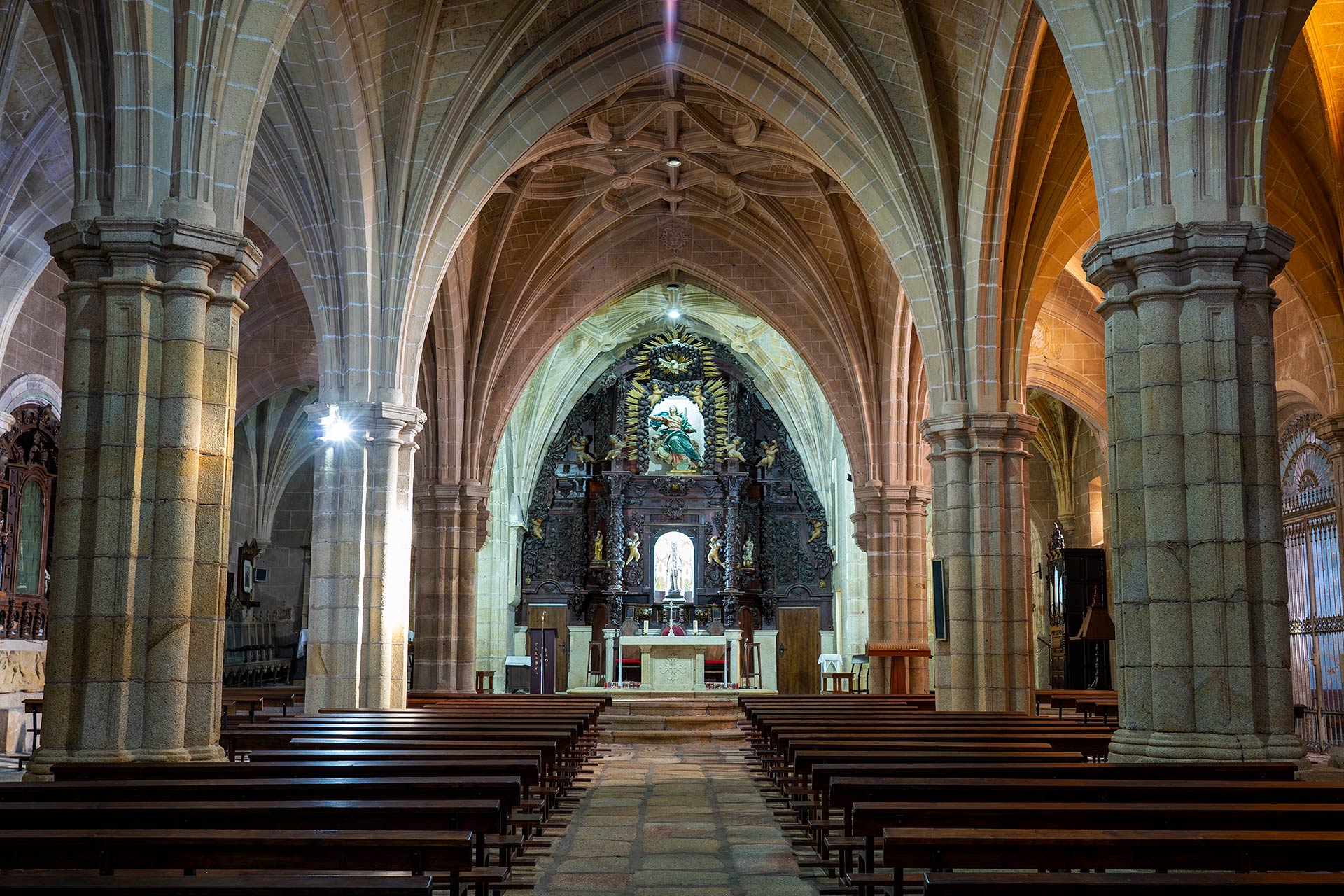This church was declared an Asset of Cultural Interest with the Historical Monument Category in 1982 and it is part of the town’s historical complex, as its most representative building.
And that’s not all. Take a good look at its façade, its vaults and the way it is built… You can appreciate the different periods of history in this monument, by observing how the passing of the centuries is reflected in this church.
We invite you to take a good look at it and to continue learning more about this authentic gem!
The current Church of Our Lady of Rocamador was built on top of another church that was there before, about which very little is know, which in turn could have been located on top of an old mosque, given the fortress’ Muslim origin. The temple that currently stands in this place began to be built in the first half of the 16th century, but it was not fully completed until well into the 18th century, due to the continuous periods of war and recession that the town went through. The result is the mixture of styles that can be seen in the monument. It is located in a strategically privileged place, as it protected the town. Over time, this area was brought into line with Catholic construction standards.
The importance of this building lies not only in its location, but also in its historical relevance, given that it was the place where the famous Royal Wedding was held between the daughter of the Catholic Monarchs, Isabel, and the Portuguese king, Don Manuel “The Fortunate”. This event, which took place in 1497, was of course attended by Isabel of Castile herself and, with this union, peace was achieved between the two kingdoms. This fact is commemorated and celebrated every summer through a theatrical representation of the royal wedding.
The church is made up of three rectangular naves. On the outside, we can see its neoclassical façade, as well as a Herrerian tower, with uneven steps and stone railings leading in to it. Inside, it is worth noting the late-Gothic style of its columns and ribbed vaults. It is also possible to admire the 16th century altarpiece of the “Virgin and Saint John”, made up of eight assembled panels painted by Luis de Morales. There is also the polychrome Christ (dating from the 17th Century), attributed to Berruguete, and Christ of the Battles, which impresses with its twisted form, which has led it to be popularly known as “Christ of the Scribble”. Another thing to see is the baroque altarpiece of the main altar (dating from the 18th century), created by José de Churriguera. You will also be able to see the image of the Virgin of Rocamador in the central niche.









